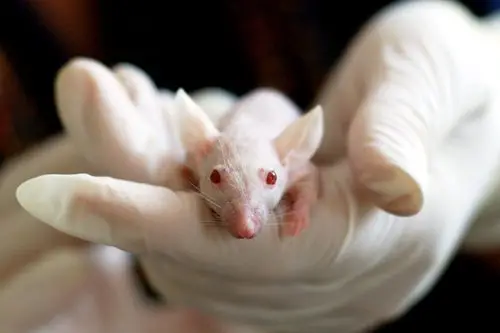The purpose of this article is to answer a frequently asked question “Why is animal hair an important forensic tool”
For decades, forensics have been hard-wired to law enforcement agencies. The application of Forensic science has been quintessential in fighting crimes, especially in cyberspace and the direct crime scene.
One of the tools that have proven very significant in tracing and apprehending suspects or victims in the crime scene is thel hair.
Notwithstanding, other forensic tools also help forensics investigate and extract relevant information which are;
- Paladin- Used to discern the cause of cybercrime.
- CAINE(Computer Aided investigative environment)- Used to carry out various types of observation to pinpoint the exact cause of a breach.
- Autopsy-A software toolkit used to assess computer hard drives and mobile phones in search of evidence to trace crimes or malicious activities.
- Pro-discovery Forensic-A powerful computer security tool that enables professionals to trace other data on a computer disk and as well provides substantial evidence that can help in carrying out legal proceedings.
- Other tools include SANS SIFT, Volatile framework, Xplico, X-ways forensics, etc.

Forensic analysts are professionals trained to use scientific methods to trace evidence from a crime scene. An animal hair discovered from a crime scene will undergo further scrutiny to identify the exact species from which it originated from potentially.
Animal hair samples are one of the relevant tools used by forensic analysts in crime scenes, which can give leads to the identification of a suspect or victim.
The bedrock of all animal hair is microscopy, which makes it possible to trace precisely which species an animal belongs. It also possesses essential characteristics, such as density, tenacity, and texture.
Animal hair allows forensic analysts to get the morphological and microscopic examination, which includes DNA analysis of identified suspects or victims. Animal fur is also resistant to chemical and biological degradation, making it easier and more accessible to forensic analysts.
The main hair structures investigated are cuticle (1), cortex (2), and medulla because they are easily detectable. The color, shaft, cuticle pattern, the medulla, the scale patterns, the guard hair diameter, and root are all subject to a thorough examination using a light microscope.
Animal hairs are classified as follows;
- Guard hairs. They are from the top or outer coat of the animal shed water. They help to protect the inner hair and keep moisture from getting to the skin.
- Wool or fur hairs. They are from the inner coat and also provide insulation.
- Tactile hairs. Found on the head (the snout or ears), where they provide sensory functions.
- Tail/mane hairs. These hairs are ifferent from the primary body hairs due to their morphology. They are also known as special-purpose hairs.
Forensic analysts regard animal hair as an essential tool for many reasons.
Analysis of animal hair at a crime scene may prove evidential for a possible contact of a suspect or victim. It also provides valuable information for further forensic investigations.

Animal hair discovered on items of evidence can be used to link a suspect to a crime scene or the exact location of the victim. Further investigations could lead to the apprehension of the culprit.
DNA evidence could prove very evidential to a vital link in some cases. Animal hair found on the clothes or belongings of a suspect in a suspect’s home or vehicle, or a victim can conclusively place a person or animal at the scene of a crime and give opportunities for investigation in many types of crimes, which also includes animal cruelty.
Forensics scientists use animal hair for trace detector analysis. Trace detectors may provide a secure link between the victim and the suspect. Trace detectors may also be the lone source that can offer reliable investigative information at a crime scene in the nonexistence of substantiating biological evidence.
Animal hair also provides strong evidence and clear leads to a suspect. Before the introduction of DNA testing, animal hair was challenging to thrive as definite proof against a suspect.
Further more, the introduction of more sophisticated techniques like DNA testing, which have a complete local atlas for animal identification, has provided a degree of individualization which has been sparse with microscopy. It has also solidified the evidentiary value of animal hair through the analysis done by nuclear DNA units.
DNA could be easily applied to animal hair the same as human hair, which makes it possible for criminals to be convicted based on DNA matches between animal hair from the culprit’s pet found on the victim. The reverse could be the case.
DNA testing, of course, is relatively expensive and time-consuming—alternatively, the macroscopic and microscopic examination assists for preliminary testing.
With the increasing animal crime, animal hair can assist wildlife forensic analysts in identifying hair. In such cases as illegal trafficking of the world’s most endangered animals, e.g., lions, bears, snakes, monkeys, etc. to make sure that perpetrators of such crimes of animal rights violations are put behind bars.
Animal hair is an essential tool used by forensic scientists due to its stability under hostile natural conditions. It makes it resistant to chemical decomposition and enhances its ability to maintain its structure after a long period. It also makes it possible for microscopic and molecular analyses of the animal hair.

With stable animal hair, a forensic scientist can provide solidifying evidence by realizing animal species then link the discovery to suspects or victims in the crime scene. It might also be helpful to trace a suspicious physical contact.
Animal hair is quintessential in criminal investigations because of its composition. Hair is mainly composed of keratin, which consists of three morphological regions: the cuticle, medulla, and cortex.
Although Human hair possesses more individual characteristics to identify individuals than animal hair quickly, forensic scientists can utilize the animal hair composition to know the exact species to which an animal belongs, which makes criminal investigation very traceable by providing evidential leads.
However, veterinary forensic medicine still has a long way to go in general, including hair examination. Which has been underdeveloped and has equally failed many times by providing false proof of individuals put behind bars.
Glossary
